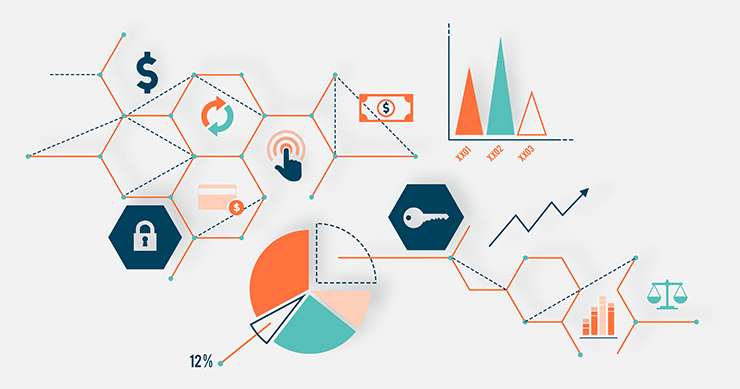Organizations around the world are grappling with a fresh array of challenges and risks. From record-breaking inflation and economic slumps to the relentless proliferation of cyberattacks and geopolitical instability, the global landscape has become a risky business. It appears that the heightened level of risk is no longer an exception but rather the “new normal.” Amidst this stark reality, business and risk leaders must adapt to the changing risk environment and embrace risk management monitoring to ensure their resilience and continuity.
Read on as we explore how to develop and monitor a risk management planthat integrates risk considerations into the planning stage, enables effective risk identification and prioritization, establishes key performance and risk indicators, and facilitates integrated risk reporting and monitoring.
For some contextual insight into the risk landscape, we will refer to a recent report conducted a year ago. In August 2022, Dun & Bradstreet joined forces with Forrester Consulting to explore today’s risk management culture and the strategic utilization of risk data within companies. As businesses confront an ever-evolving landscape of risks, understanding how organizations harness risk data to manage uncertainties and generate forward-looking insights becomes paramount to risk monitoring and control.
The online survey reached out to 423 respondents from diverse industries.

Key Findings of the Forrester Report:
- In the last 12 months, a substantial 82% of participants faced noteworthy business, financial, or reputational consequences.
- 74% of respondents identified “integrating risk management throughout the organization” as a crucial or top priority in their enterprise risk management (ERM) efforts.
- 72% of those surveyed anticipate achieving transformative or significant enhancements to business resilience by investing in risk data and management.
Between the Lines of the Forrester Report
The Need for a Holistic Risk Management Strategy
What emerges between the lines of the Forrester report is that organizations must break free from the confines of traditional risk management practices. Simply relying on risk managers and compliance protocols is no longer sufficient in an environment of complex and interconnected risks. Instead, companies must broaden their risk and governance strategies to encompass cross-functional perspectives, inviting insight and data from all areas of the organization.
The success of companies in developing a successful risk management strategy hinges on their ability to respond to rising risk levels. In light of these findings, the Forrester study emphasizes the need for a fresh perspective in risk management, urging companies to expand their risk and governance strategies beyond traditional approaches. To achieve success, organizations must embrace continuous, cross-functional processes built on data that adds value and predictive insight, and foster a risk-aware culture that empowers all employees to manage risks in their respective roles.
In the report, an astounding 100% of respondents recognize the significance of managing risks, with 92% considering it a critical or high priority. Yet, despite this heightened attention, risk levels persistently increase or remain stable, and many firms have experienced at least one disruptive risk event in the past year. Evidently, the current risk management approaches are falling short of effectively addressing the evolving risk scope.
Harnessing Data for Informed Decision-Making
One critical component of modern risk management is the effective use of data. Companies need to embrace data-driven decision-making to enhance their risk management capabilities. Data is the driving force behind effective risk management and provides the groundwork for predictive insights, which are invaluable in proactively addressing emerging risks.
Aligning Risk Priorities with Data Usage
The Forrester study also revealed a misalignment between the areas of risk that companies consider important and how, when, or where they use data. To achieve true success in risk management, organizations must align their risk priorities with their data utilization strategies. Data should be applied to the areas of risk management that are of utmost importance, ensuring maximum impact in decision-making processes.
Based on the report, the most significant shortfall in data usage occurs during customer or third-party onboarding, with 58% of respondents stating that their companies only use data for this process sometimes or rarely. Similarly, during the monitoring stage, nearly half of the respondents (48%) reported that data usage happens sometimes or rarely.
Start Getting Value With
Centraleyes for Free
See for yourself how the Centraleyes platform exceeds anything an old GRC
system does and eliminates the need for manual processes and spreadsheets
to give you immediate value and run a full risk assessment in less than 30 days
How To Develop and Monitor a Successful Risk Management Strategy
Define Business Strategy and Objectives
Before embarking on risk management, it is essential to have a clear understanding of the organization’s business strategy and objectives. A business strategy outlines the path a company intends to take to achieve its long-term goals, while objectives are the specific, measurable targets set to accomplish the strategy. A well-defined business strategy and objectives serve as the foundation for an effective risk management strategy, guiding the identification and evaluation of risks that may impede progress.
Integrating Risk Management into Planning
Many traditional strategic planning frameworks, such as SWOT analysis and the balanced scorecard, tend to overlook internal and external risks. To bridge this gap, companies should adopt a risk management framework that seamlessly integrates risk considerations into the planning stage. A risk management framework serves as a template for identifying, eliminating, and minimizing risks by providing a structured approach to risk assessment and mitigation.
Establishing Key Performance Indicators (KPIs)
KPIs play a crucial role in measuring the success of risk management efforts. Effective risk management KPIs are specific, measurable, and detailed, offering insights into areas where performance can be improved. Rather than relying on broad metrics like overall sales, which can be influenced by various factors, companies should develop KPIs that provide a deeper understanding of performance drivers. For example, tracking sales per customer allows companies to identify trends and make targeted improvements.
Establishing Key Risk Indicators (KRIs) and Tolerance Levels
In addition to KPIs, companies should establish Key Risk Indicators (KRIs) and tolerance levels for critical risks. While KPIs assess historical performance, KRIs are forward-looking leading indicators that help anticipate potential roadblocks. By setting tolerance levels for key risks, companies define thresholds that, when breached, trigger proactive risk management actions. This approach empowers companies to address potential risks before they escalate into significant issues.
Providing Integrated Risk Reporting and Monitoring
Continuous monitoring of risk in project management is a vital aspect of an effective risk management strategy. Companies must regularly track performance against KPIs, KRIs, and tolerance levels. Integrated risk reporting provides a holistic view of risk exposure, allowing decision-makers to respond promptly to emerging risks or capitalize on unexpected opportunities. Regular risk reviews ensure that risk management efforts remain aligned with the organization’s dynamic risk landscape.
Building Resilience Together
Risk management calls for a collective effort to build resilience. Collaborative initiatives among organizations, regulators, and industry associations can foster a shared understanding of risks and promote the exchange of best practices. Such partnerships can pave the way for the creation of industry-wide frameworks and standards that help minimize vulnerabilities and improve the collective ability to respond to systemic risks.
Leveraging Technology and Innovation
Technology can be a game-changer. Advanced data analytics, artificial intelligence, and machine learning can assist organizations in identifying patterns, predicting potential systemic risk events, and creating adaptive risk management models. In addition, real-time data can revitalize risk management efforts. By gaining fresh and actionable insights into customers, suppliers, and partners, your strategies become more dynamic and successful.
Centraleyes as a Comprehensive Risk Management Strategy
In today’s volatile business environment, a comprehensive risk management strategy is crucial for organizations seeking to thrive amidst uncertainty. By integrating risk considerations into strategic planning, adopting a risk management framework, building a risk assessment matrix, establishing relevant KPIs and KRIs, and implementing integrated risk reporting and monitoring, companies can enhance their resilience and seize opportunities in the face of adversity. As risks continue to evolve, a proactive and agile risk management approach will be the differentiating factor for businesses aiming to secure long-term success.
Contact Centraleyes today to learn more.
Start Getting Value With
Centraleyes for Free
See for yourself how the Centraleyes platform exceeds anything an old GRC
system does and eliminates the need for manual processes and spreadsheets
to give you immediate value and run a full risk assessment in less than 30 days





